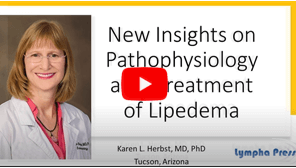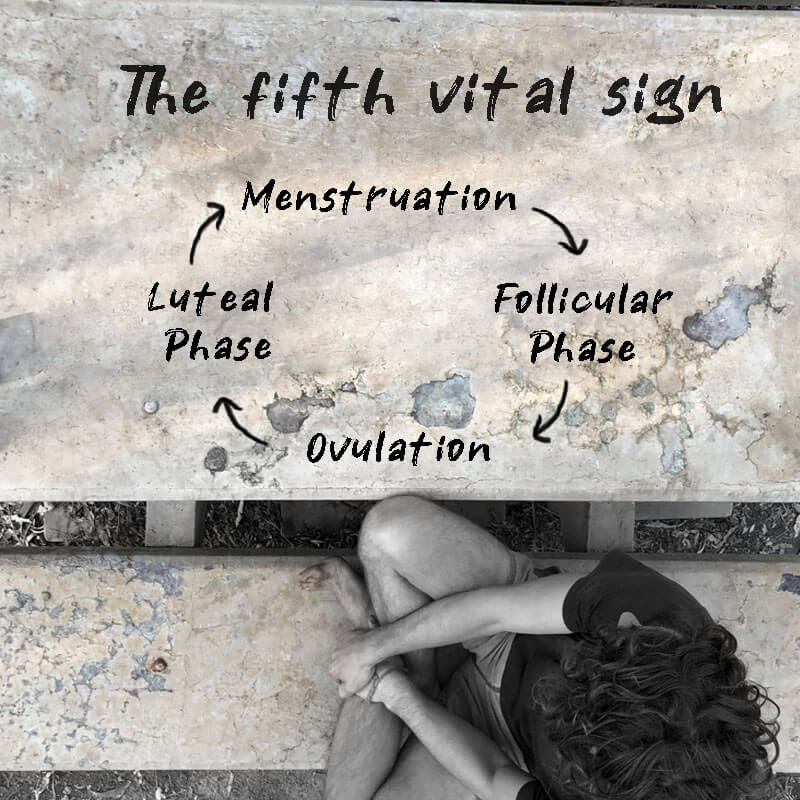Karen Herbst is a renowned researcher and physician specialising in the study and treatment of adipose tissue disorders, including lipedema, lymphedema, and Dercum’s disease. Her work has provided invaluable insights into these complex conditions, paving the way for more effective treatment options and improved patient outcomes. In this article, I will explore Herbst’s research and the impact her work has had on patients living with these challenging disorders. I will primarily focus on Lipedema in this article although this article will be relevant for all three as there is significant crossover and common treatments.
Lipedema
Lipedema is a chronic condition characterised by the abnormal accumulation of fat, primarily in the lower extremities. This condition disproportionately affects women and often goes misdiagnosed or underdiagnosed due to its similarities with obesity and lymphedema. Herbst’s research on lipedema has highlighted the distinct differences between lipedema and other adipose tissue disorders, leading to more accurate diagnoses and targeted treatments. Although lipedema is often referred to as a ‘rare’ disorder, some reports suggest that it affects approximately 10% of women, including those who do not exhibit abnormal weight.
Lymphedema
Lymphedema is a condition resulting from damage or dysfunction in the lymphatic system, leading to the accumulation of lymphatic fluid and swelling in the affected limbs. This disease manifests in a very similar way to lipedema with the distinct difference being the presence of free fluid which is evident in ultrasound inspection and less symmetric visual presentation of the disease. The hands and feet are swollen in lymphedema whereas they are unaffected in lipedema.
Dercum’s Disease
Dercum’s disease, also known as Adiposis Dolorosa, is a disorder characterised by painful fatty tumors (lipomas) that develop throughout the body. Herbst’s research on Dercum’s disease has helped elucidate its potential causes, including genetic and hormonal factors, and the role of inflammation in symptom manifestation.

Herbst Webinar | New Insights on Pathophysiology and Treatment of Lipedema

Karen Herbst | Lipedema: Cooling the Fire Within
Is lipedema treatable?
Yes, there are various treatments available for lipedema, including several that can be undertaken at home, which have demonstrated effectiveness in treating and even reversing the condition. With consistent application of various treatments, you can expect improvements in the following areas:
- Fibrosis: This is a thickening or scarring of connective tissue that can occur in lipedema.
- Free Fluid: Lipedema can cause an abnormal accumulation of fluid in the tissues, and treatment can help manage this.
- GAG Bound Fluid: Treatment can help manage the fluid bound by glycosaminoglycans (GAGs), complex carbohydrates that contribute to fluid retention.
- Skin Elasticity: Treatment can enhance the elasticity of the skin, which might be compromised due to lipedema.
- Circumference: Effective treatment can reduce the circumference of affected areas, helping to reverse the physical effects of lipedema.
- Pain: One of the key symptoms of lipedema is discomfort or pain, which can be effectively managed with treatment.
Testing
Herbst has recommended several tests that could be beneficial. She also suggests consulting with a rheumatologist, although she acknowledges that they may be difficult to locate. A comprehensive list of the tests that you may wish to consider:
- C-reactive Protein test, which serves as a marker of repair during the macrophage stage of inflammation.
- Erythrocyte Sedimentation Rate (ESR), which can indicate inflammation in the body.
- Complement Proteins test (C3/C4), to assess the immune system.
- D-Dimer Level test, which can detect subclinical clot formation.
- Platelet Factor 4 test, an element of the coagulation system.
- White Blood Cell Count, an indicator of immune system health.
- Tests for immunoglobulins (IGM, IGE, IGG), including IGG subclasses (IGG1/2/3/4), to evaluate immune response.
- Lipid Panel, to assess cholesterol and triglyceride levels.
- Fasting Insulin and Glucose tests, to evaluate insulin resistance and blood sugar levels.
- A1c, also known as the Haemoglobin A1c test, for long-term blood sugar control.
- Comprehensive allergy assessment: IgE RAST Blood Testing, also known as Skin Prick Testing, can be used to identify true allergies. If you find yourself reacting to all types of food during this testing, it could be an indication of a condition known as ‘leaky gut’.
Treatment
External Pneumatic Compression Pumping
External pneumatic compression pumping has been demonstrated to be an effective treatment for lipedema, with notable improvements in the extracellular matrix (ECM). The specific benefits of this treatment include:
- Enhanced lymphatic flux.
- The exit of glycosaminoglycans (GAGs) from the ECM, facilitated by increased lymphatic flux.
- Reduction of skin fibrosis in lower extremity edema.
- Stimulation of connective tissues.
“We know stretching and movement of tissue is important and pumps do this”
Improvement in the ECM through external forces on tissues:
- Stretching of pre-adipocytes prevents them from maturing into adipocytes (mature fat cells that store triglycerides).
- Energy is spent on ECM remodelling (healing) instead of fat storage.
- In mouse models, inflammation has been observed to decrease quickly when a mouse with induced inflammation is stretched.
Before pumping: Engage in whole body vibration, exercise, deep tissue treatments like gua sha, bouncing, squeeze and release exercises, and the “dead cat shake”. After pumping: Use compression garments, elevate legs, and exercise.
Herbst advises to gradually incorporate pumping into your routine and to ensure that compression garments are custom-fit to your body for optimal results.
Far-infrared radiation thermotherapy (FIRT)
Far-Infrared Radiation Thermotherapy, or FIRT, is a non-invasive treatment that uses infrared energy to generate heat and promote healing. The therapy works by penetrating deep into the body’s tissues, improving circulation and stimulating cellular metabolism, which can assist with detoxification. In the context of lipedema, FIRT has shown promise in reducing inflammation and pain, improving skin health, and aiding in the detoxification process, which can potentially alleviate the burden of toxic metals stored in the body’s cells. As always, it’s important to consult with your healthcare provider to understand if this therapy is right for your specific condition and needs.
Other non-invasive procedures and techniques:
These include Cavitation, Ultrasound, Radio Frequency, and Endomology (vacuum roller) treatments, with a word of caution about using Endomology in late stages due to the risk associated with having thin skin. Self-manual therapy, muscle massages, Epsom salt baths, various types of movement and aquatic exercises, manual lymphatic drainage, and breathing exercises can also be beneficial.
A word of caution: Be mindful with cryolipolysis (CoolSculpting) as paradoxical adipose hyperplasia (PAH) can result from this procedure. However, cryotherapy can be useful for reducing inflammation.
Diet and lifestyle
Herbst, along with other authors, has published a book titled “Lymphedema and Lipedema Nutrition Guide: foods, vitamins, minerals, and supplements”. She advocates for an anti-inflammatory diet, followed by a low-carb, high-fat (LCHF) diet. She notes that even partially reducing carbohydrate intake and incorporating more healthy fats can be beneficial. Additionally, she highlights the use of spices in meals to reduce inflammation.
Diosmin, found in citrus peels, helps control inflammation, adjust muscle contractions, and manage blood vessel size and lymphatic flow.
Herbst’s top recommendations for supplements:
- Enzymes such as Wobenzyme, Serrapeptase, and Nattokinase, which can help break down fibrosis and eliminate microvascular clots.
- Diosmin, found in the rind of citrus fruits, is known to reduce inflammation, normalise smooth muscle contraction, and hence regulate blood vessel size and lymphatic pumping.
- Vitamin D, which is known to prevent the formation of fibrosis.
- Selenium was mentioned as a contextually significant nutrient, but with a cautionary note on the potential for mineral toxicity if it’s consumed as a supplement.
Other anti-inflammatory herbal medicines and supplements:
- Hesperidin
- Quercetin
- Pycnogenol
- Rutosides
- Butcher’s Broom
Surgery
In some instances, surgery may be necessary to restore mobility or to gain control over lipedema. If surgery is a consideration, it is crucial to reduce inflammation before undergoing the procedure to prevent post-surgery complications such as fibrosis. Herbst emphasises that the most effective way to avoid needing surgery is to manage or reduce the amount of loose connective tissue (fat).
Lipedema: A Deeper Dive
Lipedema is a chronic condition characterised by the abnormal accumulation of fat (loose connective tissue as described by Herbst), primarily in the lower extremities, causing the arms and legs to be disproportionate to the rest of the body. This condition disproportionately affects women and often goes misdiagnosed or underdiagnosed. Lipedema typically presents itself at times of hormonal shift. About half the patients experience pain when something or someone touches their tissue and roughly the same proportion have hypermobile joints (the hypermobile joints may be indicative of genetic factors for predisposition for the disease).
Herbst describes it this way: Lipedema is a connective tissue disease of increased capillary and post-capillary venule fluid flux into the extra cellular matrix (ECM) causing a rise in glycosaminoglycan (GAG) bound fluid eventually leading to lymphatic disfunction and fibrosis.
Lipidema: Loose Connective Tissue Disease
Lipedema is a loose connective tissue (LCT) disease where the tissues exhibit:
- Edema (swelling caused by fluid trapped in your body’s tissues)
- Fibrosis (the development of fibrous connective tissue)
Fibrosis can develop in the loose connective tissue extra cellular matrix gel and the loose connective tissue extra cellular matrix fibres. It can also develop in the muscles.
Lipedema, Lymphedema and Obesity
When comparing lipedema to lymphedema, lipedema has GAG bound fluid only whereas lymphedema has GAG bound fluid as well as free fluid.
There is also a correlation between lipedema and obesity whereby lipedema worsens (or increases the risk of) obesity and obesity worsens lipedema. Sometimes, lipedema can be wrongly diagnosed as only obesity when both conditions are present.
Lipedema and angiogenesis
Any fluid entering from the blood vessels has to leave through the lymphatics. If you damage the lymphatic vessels fluid will build up not only free but it will also build up bound to glycosaminoglycans (GAGs).
The fluid comes from small vessels or micro vessels – the capillary vessels. There appears to be a connection between the growth of new vessels (angiogenesis) and the presence of inflammation which increases the amount of fluid leaving from these vessels. I believe it may be worth looking into ways to heal angiogenesis disturbances for which I believe William Li who features elsewhere on this site can offer some insights.
How do we define Inflammation?
Like many chronic illnesses the roots of lipedema are in chronic inflammation. I particularly like how Herbst has taken the time to explore the meaning of inflammation. The word inflammation comes from the Latin inflammare (to set on fire). She states that the Roman Celsus described in the 1st century AD the four cardinal signs of inflammation to be: rubor (redness), tumor (swelling), calore (heat), and delore (pain).
Is there evidence of a connection between lipedema and toxic metal storage?
I posit that the accumulation of toxic metals in the human body could be a notable factor influencing the onset of lipedema. Here is the basis of my conjecture: A substantial number of individuals suffering from chronic ailments have been found to harbour a high concentration of toxic metals. These harmful metals are kept in cells across our body, and I consider this toxic metal load to be one of the seven primary causes of disease.
Herbst has pointed out the prevalence of increased macrophages in the skin of lipedema patients and the application of far infrared radiation thermotherapy (FIRT). It’s worth noting that macrophages have the capacity to engulf aluminium (a toxic metal), leading to its distribution across the body. For a more comprehensive understanding of this phenomenon and its implications, I recommend delving into the research conducted by Chris Exley, particularly his insights into what he refers to as the ‘Aluminium Age’.
Furthermore, it’s acknowledged that infrared radiation therapies serve to purge toxic metals from our bodies. Consequently, I find myself pondering if there has been any research conducted to explore the potential storage of these toxic metals within the cells of lipedema patients.
*
The significant research of Karen Herbst has shed new light on adipose tissue disorders like lipedema, lymphedema, and Dercum’s disease, contributing significantly to our understanding of these complex conditions. Her work has not only paved the way for more accurate diagnoses but also advanced the development of various treatment modalities, encompassing dietary interventions, supplements, lifestyle modifications, non-invasive therapies, and even surgical options in severe cases. However, the journey to better comprehend these disorders and develop more efficient therapies continues, and it’s essential to keep exploring potential links and causes, such as the role of toxic metals, inflammation, and angiogenesis disturbances. By gaining a more profound understanding of these conditions, we can hope to improve patient care for individuals affected by these challenging disorders.

Nils Strohbeck
Connect
A Perfect Coup: Pharmaceutical Industry’s Hold on Healthcare
A dive into industry's extensive influence
Lead and the Fall of the Roman Empire: Welcome the ‘Aluminium Age’
How Aluminium is Affecting Our Health









